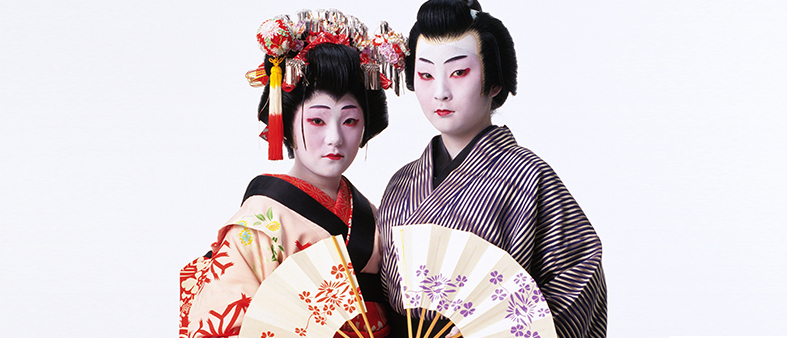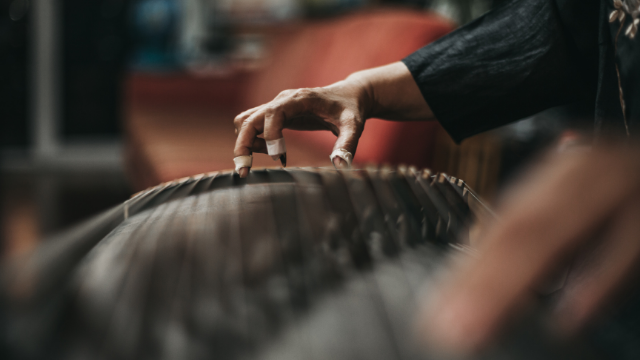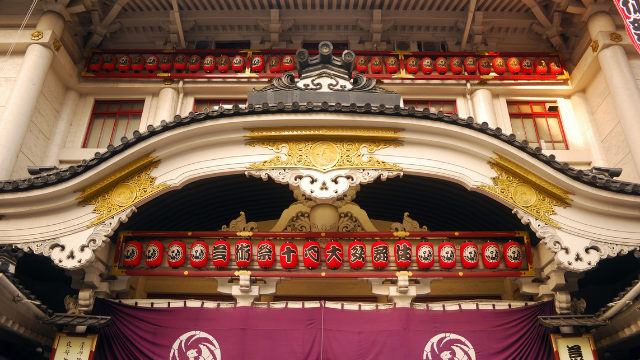
Kabuki Theatre: Japan’s Iconic Performance Art
You may recognize Japan for its beautiful scenery, lively city atmosphere, and unique culture, but the country itself has way more to offer than you might think. Dig a little deeper, and you’ll discover a wealth of history surrounding Japan’s relationship to the fine arts — with kabuki theatre being one of the most influential and distinct performance arts in the country’s illustrious history.
In this article, you’ll learn
- What is the history of kabuki Theatre
- The 5 elements of kabuki theater?
- Where can I see a kabuki show today?
- Kabuki etiquette
History of Kabuki Theatre
Kabuki theatre has existed for centuries, with its conception occurring in the Edo period — as early as 1603. The genre was created to appease townsmen who were looking for a raw, emotional, and gaudy art form to watch and indulge in.
However, the introduction of this new performance art didn’t sit well with the shogun – the military leader and de facto ruler of Japan. From the very beginning of the Edo period, the shogunate was appalled at the blatantly graphic content presented in kabuki theatre.
Since kabuki comic dance routines were originally performed by women to a majority male audience, the shogunate made the assumption that the women onstage were prostitutes and promptly banned women from the art in 1629.
Onnagata – a New Version of Femininity
Since then, kabuki performances have featured only men, with male actors playing both the male and female roles. However, the male actors who portray these female roles (known as onnagata in Japanese) are said to have constructed a new femininity that is more than simply female impersonation; over the centuries, these actors have created a new version of “womanhood” unique to kabuki that is specialized for the stage!
Types of Kabuki Plays
Though kabuki plays share some common characteristics, there are a wide range of plays from numerous different time periods that have been performed. While some kabuki plays were adapted from stories written before the Edo period, others feature the tumultuous daily lives of Edo townspeople, creating a more realistic atmosphere. Some anime series and films, such as Naruto or Nausicaa, have also been adapted into kabuki performances, catapulting this classical artform into the contemporary world of Japanese pop culture.
The 5 Elements of Kabuki Theater
Though kabuki has undergone several metamorphoses throughout Japan’s modern history, some aspects of the performance have withstood the test of time.
1. Kabuki Costumes
One of kabuki’s most recognizable characteristics is its use of costumes and makeup: performers will be dressed in layers of traditional Japanese clothing, padded accordingly to create the desired body shape for the character. Costumes are often colorful and detailed, often accentuated with real gold and silver – making them not only beautiful to look at, but also very heavy and expensive. Actors who portray courtesans or nobles, who are often depicted with ornate clothing and jewelry, may have costumes that exceed sixty pounds in weight!
2. Kabuki Makeup
Kabuki makeup is equally ornate and recognizable, with actors donning the customary white base alongside colorful accents that emphasize a certain emotion and denote the character’s alignment within the story. This phenomenon, called kumadori in Japanese, uses certain colors to represent certain ideas or characteristics: red for youth, indigo for evil, and brown to represent ghosts and supernatural beings.
3. Kabuki Acting Styles
The acting styles you’ll see when you experience kabuki are far different from those of film, TV, or even Broadway stage performances. While some kabuki dances are characterized by elegant, subtle movements, other aspects employ over-the-top speech and movement patterns to emphasize the malevolence or masculinity of certain characters.
Kabuki performances are also spoken in classical Japanese, making some of the speech more difficult to understand, even for native speakers! Before attending a kabuki performance, it’s a good idea to review the story or folk tale the play is based on so that the details don’t get lost in translation!
4. Kabuki Music
One of the most important and impressive aspects of kabuki performances is the use of live music. Traditional Japanese instruments are used alongside the booming voices of powerful narrators, making the story all the more compelling. Music is also employed as a means of live “special effects;” footsteps and poses are often accented by the clap of wooden blocks or other percussion instruments, creating a stop-motion effect that helps the audience understand the internal monolog of the protagonist.

5. Kakegoe – Audience Participation
Kabuki performances also feature audience participation! This phenomenon, known as kakegoe, has been a part of the art form for centuries. A guild of audience members will often be stationed within the audience, yelling out praises for the characters onstage at just the right moments. This not only heightens the energy of the rest of the audience but also works to invigorate the actors, ensuring an all-around thrilling performance!
Where Can I see Kabuki Today?

With kabuki shows being a longstanding staple of the cultural scene, it’s no wonder that the Kabukiza Theatre in Ginza has become a popular tourist destination. The timetable for shows is repertory, which means that plays and dances are often repeated on a cyclical calendar. Turnover times for performances span only a few days, with the actors’ rigorous schedules often consisting of rehearsals for one show while performing another.
Kabuki Etiquette
When attending a kabuki performance, proper etiquette for audience members is expected. Generally, this etiquette doesn’t differ from what you’d expect of any theatrical production: visitors should turn off their phones before watching the performance, refrain from any kind of photography, and remain in their seats at all times.
Interpretation devices are also offered in the theatre, giving non-Japanese speakers an English translation of the script and narration to follow along with the action! In the intermissions between acts, audience members can purchase traditional Japanese bento boxes, sandwiches, or even alcoholic beverages, including traditional Japanese sake.
Guests may also want to visit the interactive exhibition within the theatre, where many kabuki props and costumes are displayed for customers to view up-close.
Kabuki theatre is a stunning and incredibly complex performance art that has cemented itself as an internationally-recognized staple of the Japanese cultural landscape. The humble origins, stunning visuals, and fascinating history associated with kabuki mean that there’s something for everyone within each and every performance!
1 Comment for "Japanese Kabuki Theater – Everything You Need to Know"
So fascinating. I would love to attend a performance. The actors are so dedicated. I admire and respect them very much.